Owl Wall Hanger, Hand Carved Decorative Cutwork Wood Coat Hook
Owl Wall Hanger, Hand Carved Decorative Cutwork Wood Coat Hook
Couldn't load pickup availability
Perfect for living room, bedroom, office, kids' room, or college dorm a beautiful hand-carved wall hook to add a vintage look to your existing decor. These will keep your everyday essentials organized and easy to find.
Handcrafted from cast iron by master artisans, this sturdy rustic wall hook is ideal for hanging coats, hats, purses, scarves, towels and keys. Add a hint of rustic decor with this decorative hanger.
Check out our new Elephant Hanger (3 Hooks) by clicking here.
Features
- Hand-carved from Indian Mango wood by expert artisans
- Fun, owl-shaped wall hanger
- Single iron hook
- Easy to mount
- Fair Trade product
- Made in India
- Due to the handmade nature of this item, each is unique and will vary
Dimensions
- With Hook - Approx. Height = 165 cm
- Without Hook - Approx. Height = 118 mm, Approx. Width = 77 mm
Note
- Due to the nature of hand-made products, kindly expect slight imperfections. This is not a defect and the "Hand Carved Owl Wall Hanger - Decorative Coat Hook - Sustainable Wood" is non-refundable due to this reason.
- Care instructions: wipe clean with a soft dry cloth
Share
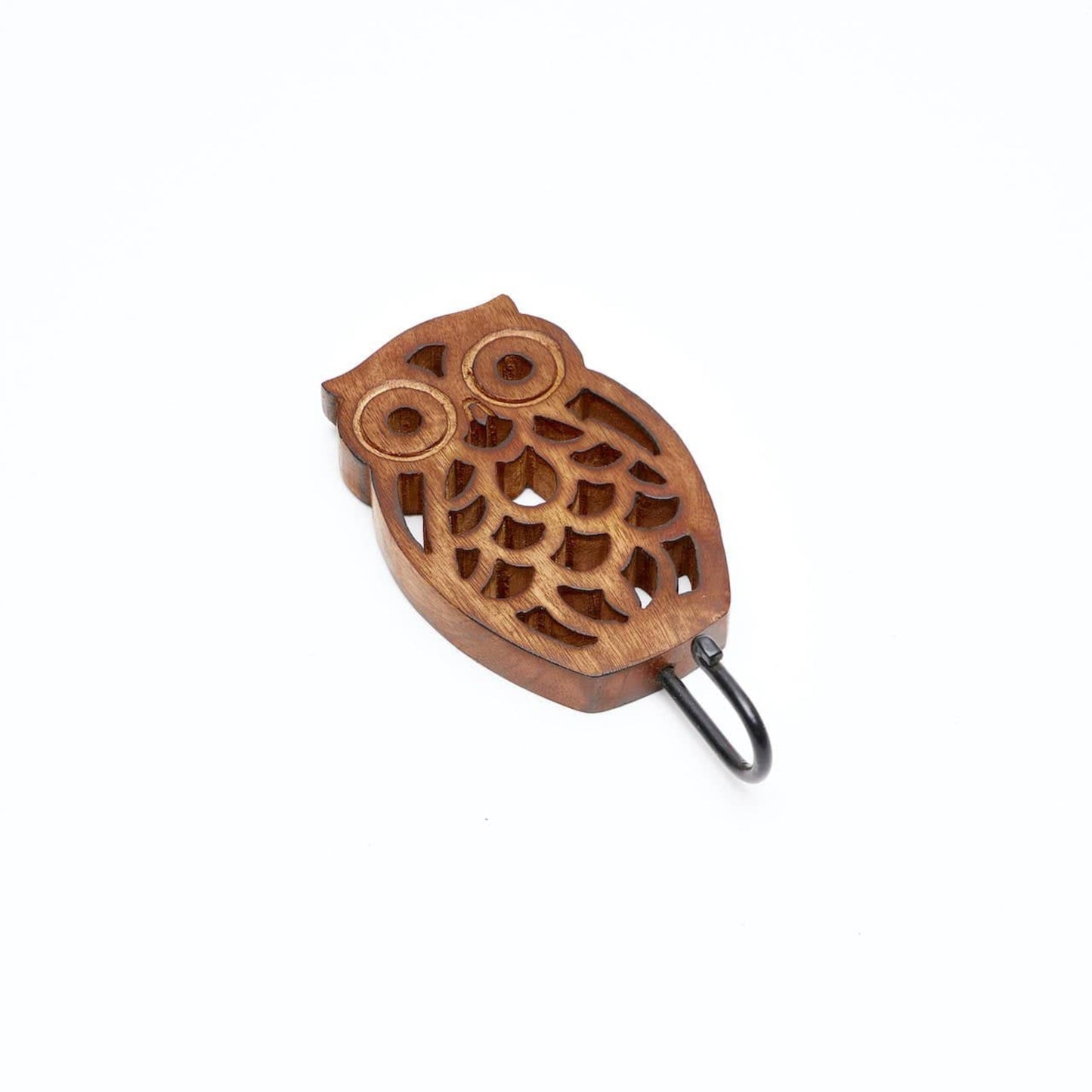
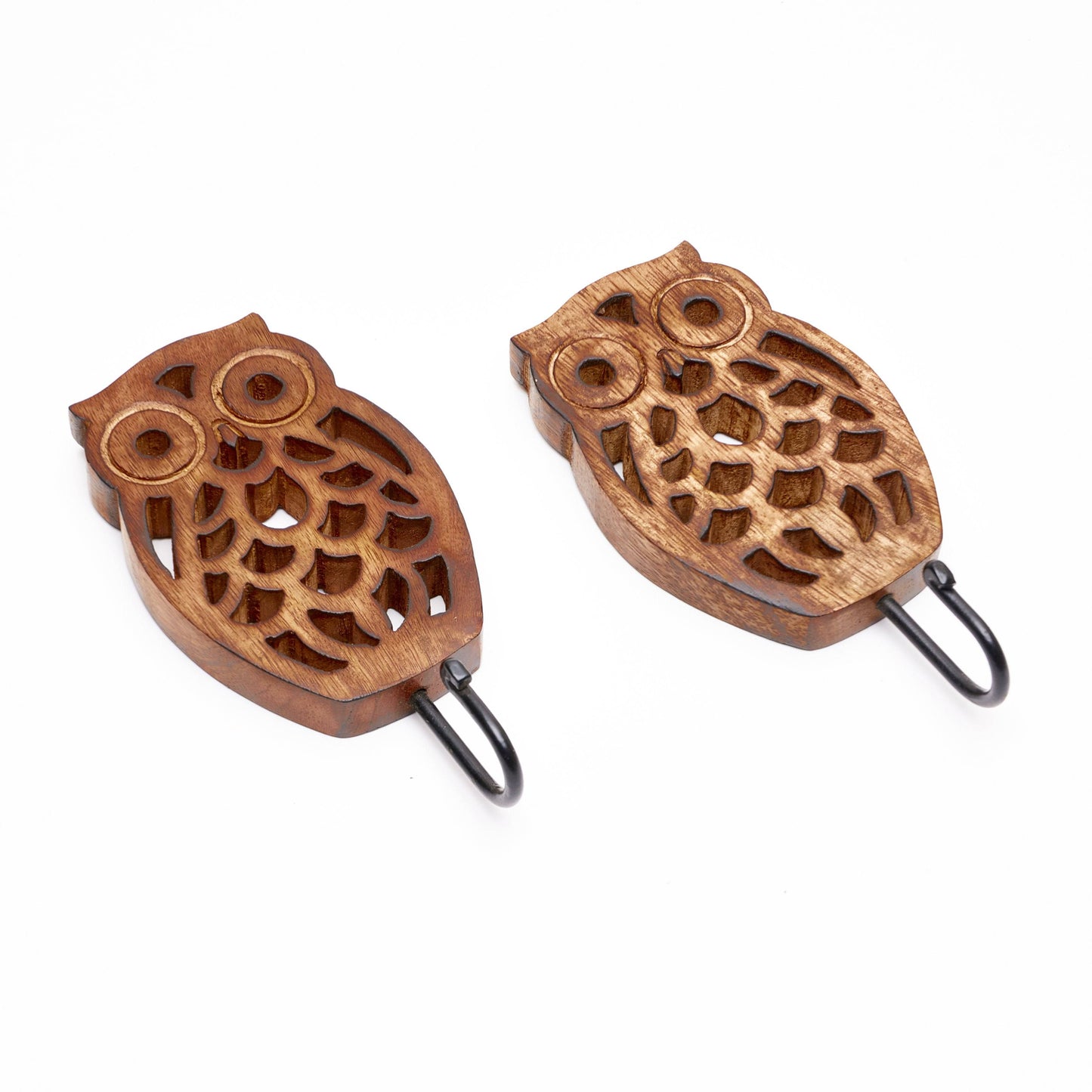
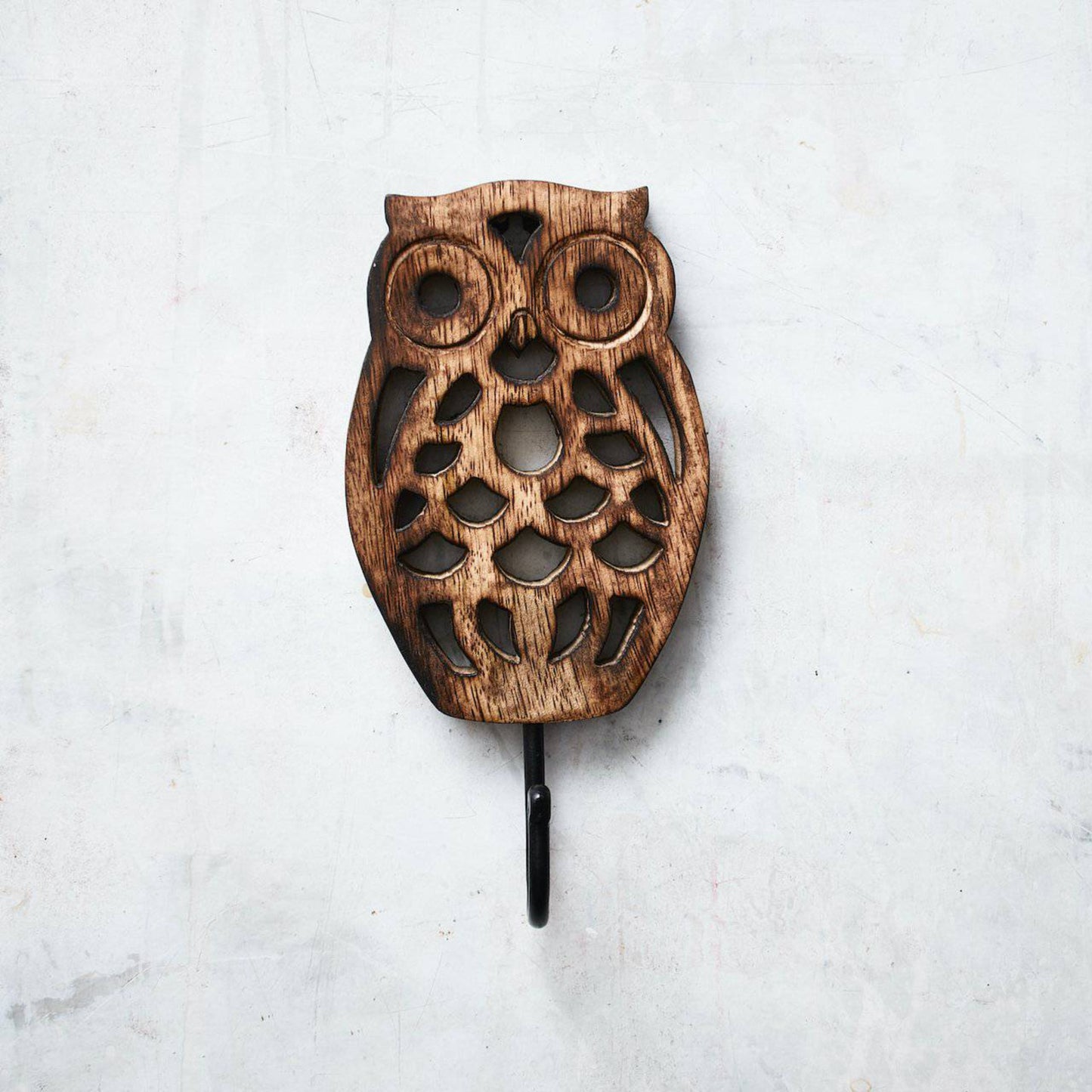
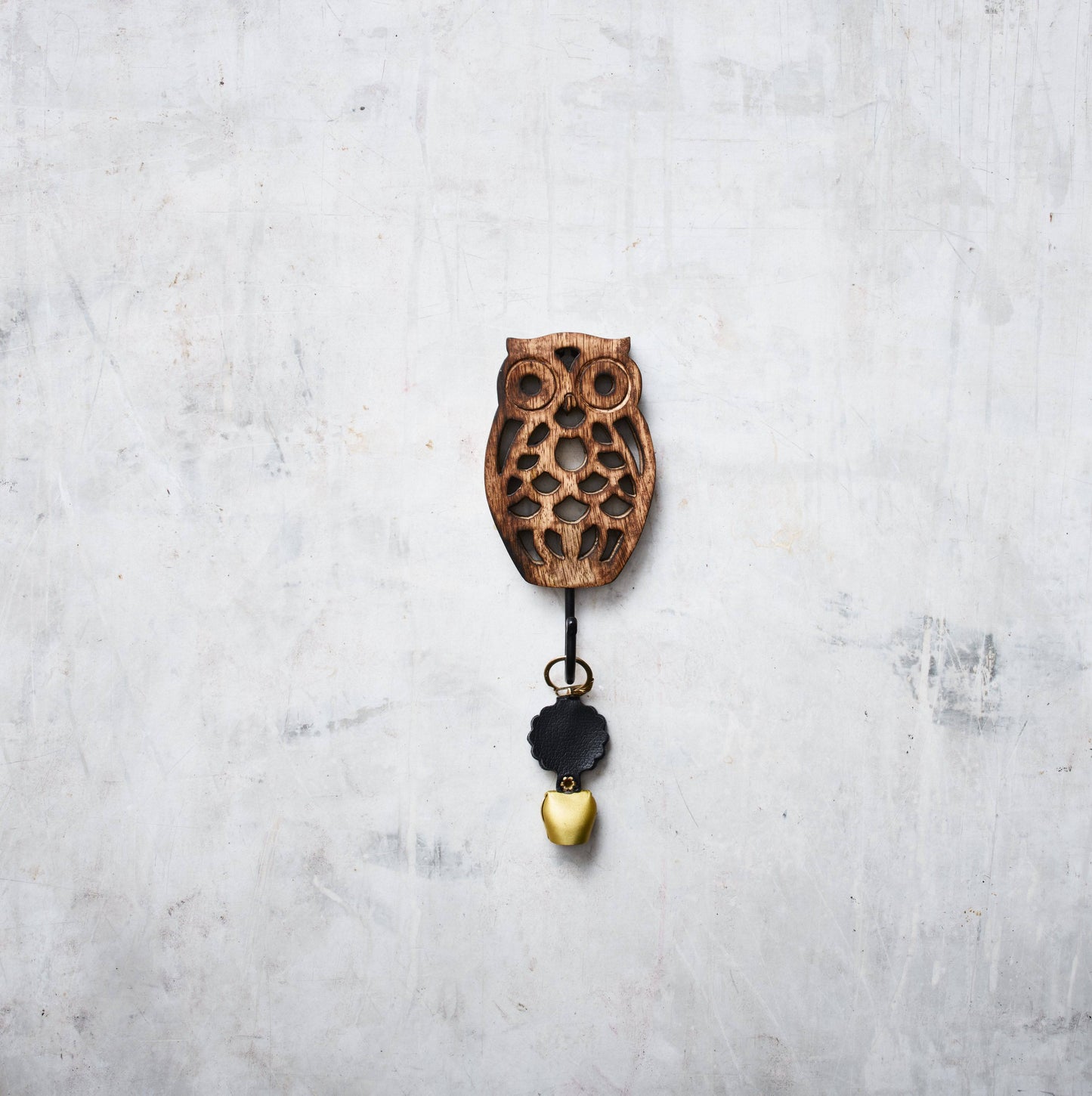
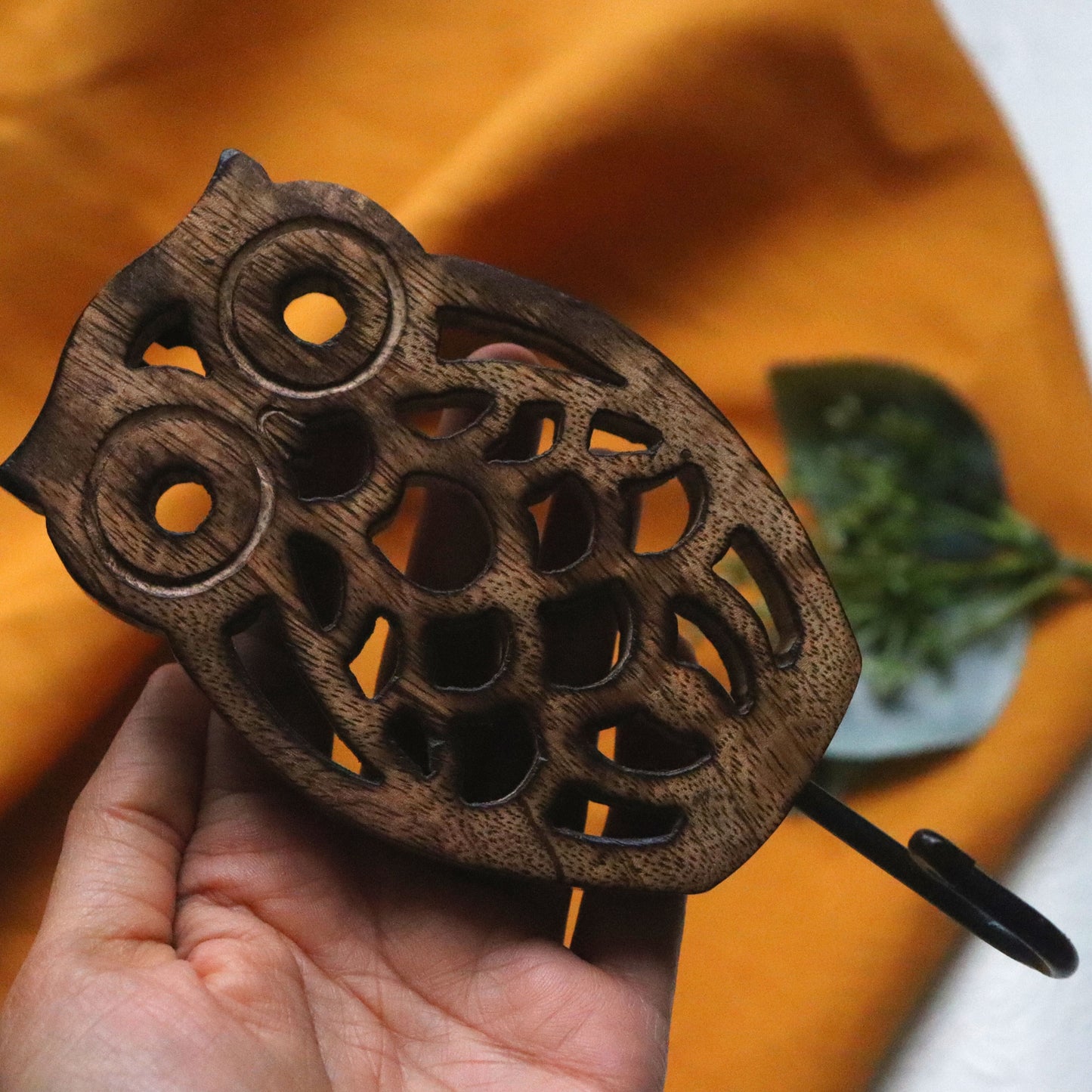
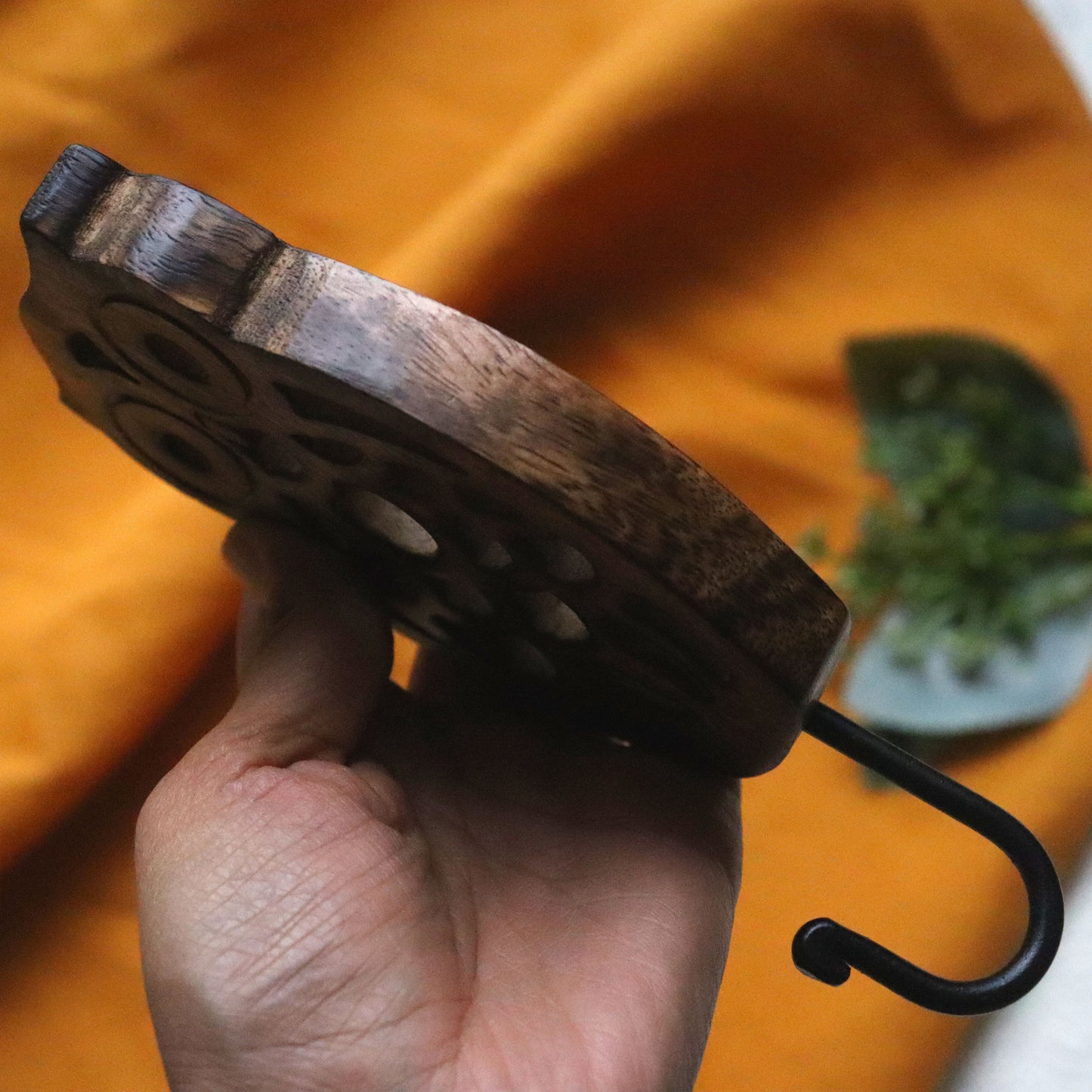
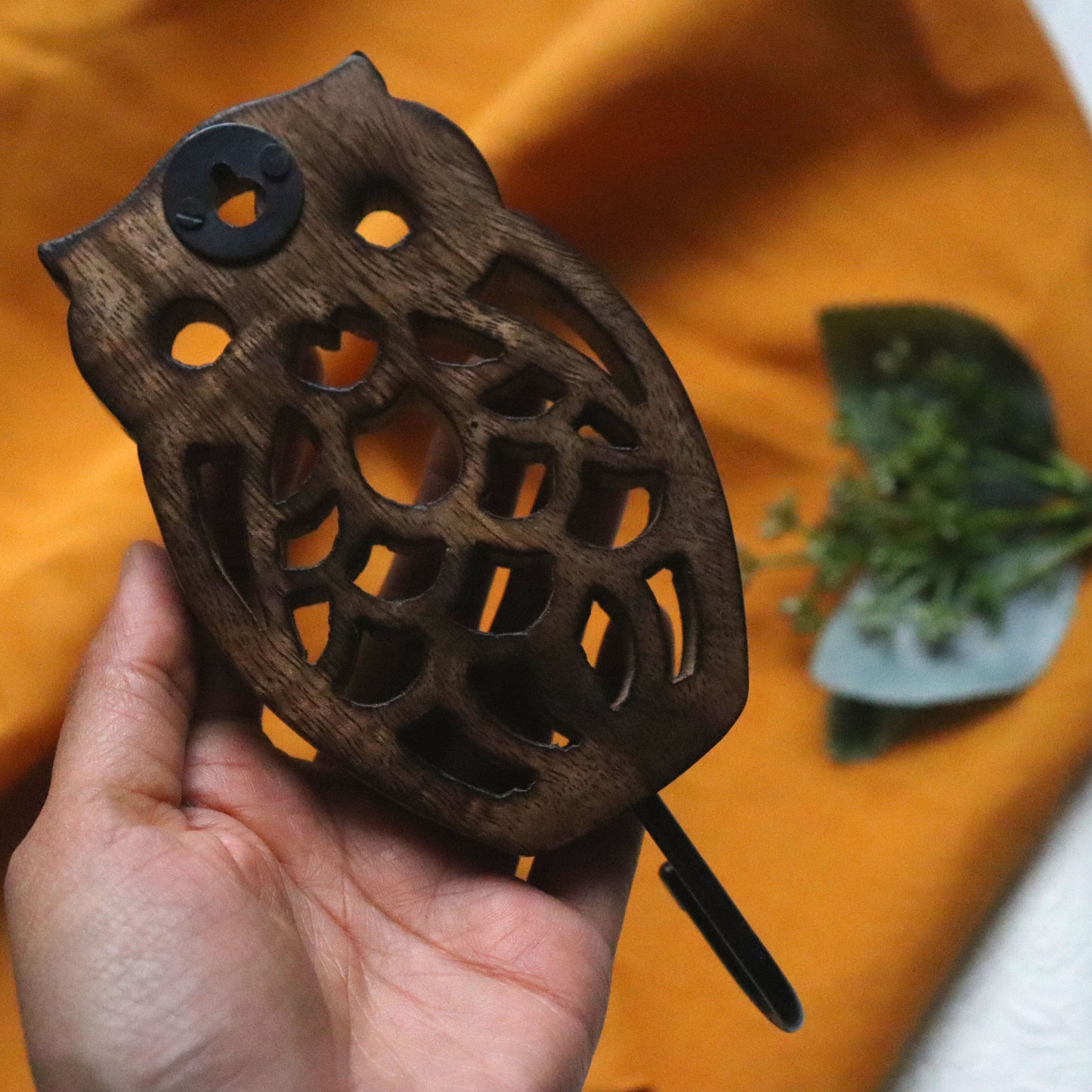

-
Free Shipping over $75
Shipping Policy$10 Fixed standard shipping fee is waived off when the order value is $75 or above (AU) and $100 or above (NZ).
-
-
Buy Now, Pay Later
Choose your favourite service - AfterPay, Zip, Latitude Pay, Klarna
Collapsible content
Why are Aksa handmade wall hooks the best?
Why settle for generic, mass-produced hardware when your home deserves artistry? At Aksa Home Decor, we believe the best functional items are also meaningful works of art. Our handmade wall hooks aren't just here to hold your coat; they tell a story of traditional craftsmanship, ethical sourcing, and unique design. From the moment you hang your first item on one of our pieces, you'll understand why customers consistently call them the best—it's the blend of unparalleled durability and soulful character you simply won't find anywhere else.
- Fair Trade - Aksa is a fair trade shop. This means every hook has been lovingly crafted by an artisan in return for economic independence, welfare and community engagement. Read more about the 10 Fair Trade principles. We are also the recipient of the 2023 Australia Post Local Business Hero Award Winner.
- Handmade: Our range of wall hooks is entirely handmade using hand tools and traditional craftsmanship passed down through generations. This means each piece is unique in its own beautiful and warm way in terms of design and beauty.
- Eco-friendly, Sustainable Raw Materials: All of our games have been handcrafted in India using eco-friendly and sustainable raw materials like mango wood.
When you buy our hooks, you’re not just organising your space—you’re decorating with purpose, making these the best choice for both your home and the global community. Whether you need a simple solution for the entryway or a decorative piece for the bathroom, the hand-finished excellence of every Aksa hook proves that the best organizers are the ones designed to be admired, not hidden.
About Indian Woodcraft & Artisans
History of Wood
Since centuries, wood has provided fire, shelter, tools, and supported so many inventions e.g. the wheel. Woodcraft in India is dated back to the ancient times of Maharajas. Initially, the art was limited to carving sculptures and windows of temples and palaces. Over many generations and under the influence of its region's culture and locally available wood the art form has evolved and now extends to articles like furniture, decorative pieces, storage boxes, table lamps, toys and puppets.
What is Softwood and Hardwood?
Wood can belong to either of the two categories - softwood or hardwood. Technically, softwood comes from the botanical group Gymnospermae and hardwood comes from the botanical group Angiospermae.
Most softwood are evergreen, have no flowers and develop their seeds in cones (coniferous). They are usually fast growing. This makes them the most widely used woods commercially. Indian Sandalwood is an excellent example of softwood. It has a fragrant resin, thus is highly sought after for making religious images.
Hardwood are usually slower growing than softwoods. They have dense wood lending itself to greater structural integrity than softwood (durability), and is less prone to insect damage. A few examples are walnut, mahogany, balsa, oak, chestnut, elm, teak and sycamore.
About Artisan's Craft
India has an abundance of native wood that lends well to the carving and inlay work. Some examples are Ebony, Rosewood, Sandalwood, Sheesham, and Sal.
The diversity of each region's style and carving technique reflects in the motifs, and patterns on each carved article. The geometrical and floral patterns are the most popular. When an object is carved from a single block, it is believed that the spiritual energy inherent in the tree remains more concentrated.
To produce a beautiful carving from a block of wood requires sharp tools, suitable timber, and planning. Once cut, the wood can not be reattached and thus the artisan has to be careful while shaping his pattern. Finest carding is possible on hardwood due to its ability to split less, and wide range of colours.
What are different wood carving techniques?
There are quite a few carving techniques, some of which are mentioned below.
- Sawn technique - marking of design on a flat piece of wood, and then cutting using a saw.
- Incising and stamping - Scratching wood, making grooves, stamping
- Chip carving - repetitive patterns cut on one chip at a time.
- Flat-pattern carving - think of the carving required to make wooden stamps or printing blocks that are used for dyeing cloths.
- Relief carving - technique to create a three-dimensional effect on a flat surface by cutting back the background and rounding the projecting objects.
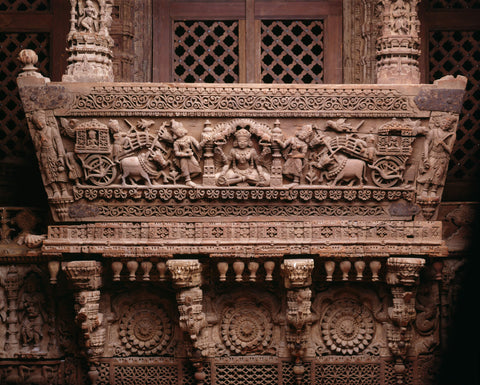
Pic: Relief carving used on an Architectural Ensemble from a Jain Meeting Hall
- Intaglio carving - the opposite of relief carving; think of this as moulding.
- Turning - Spinning wood against a tool. This technique has been used to make our nested dolls.

Pic: Nested dolls in a park setting
- Bending technique - for forming curved surfaces
- Joinery - Joints can either fit against each other, across each other or into each other. They can be used to connect lengthwise or at an angle.
What are different wood decoration techniques?
Once our artisan has craved the product, they can employ a range of decorating and finishing techniques to create the final product. Example of such decorations are paintwork, inlay (insetting shapes into cuts made in the wood), banding, and marquetry (pieces are glued to the surface of a piece of wood).

Pic: example of inlay set in Tic Tac Toe Game Set
Conclusion
In many regions, woodcraft production is vital for community livelihoods. By participating with Fair Trade organisations, we contribute to alleviating poverty and promoting sustainability through ethical practices. These organisations aim to educate and empower disadvantaged sections of the Indian community by providing them with job opportunities, gender equality, fair wages, safe and healthy working environment while preserving the local culture & traditional skills.
Book Reference:
Wood - the world of woodwork and carving









